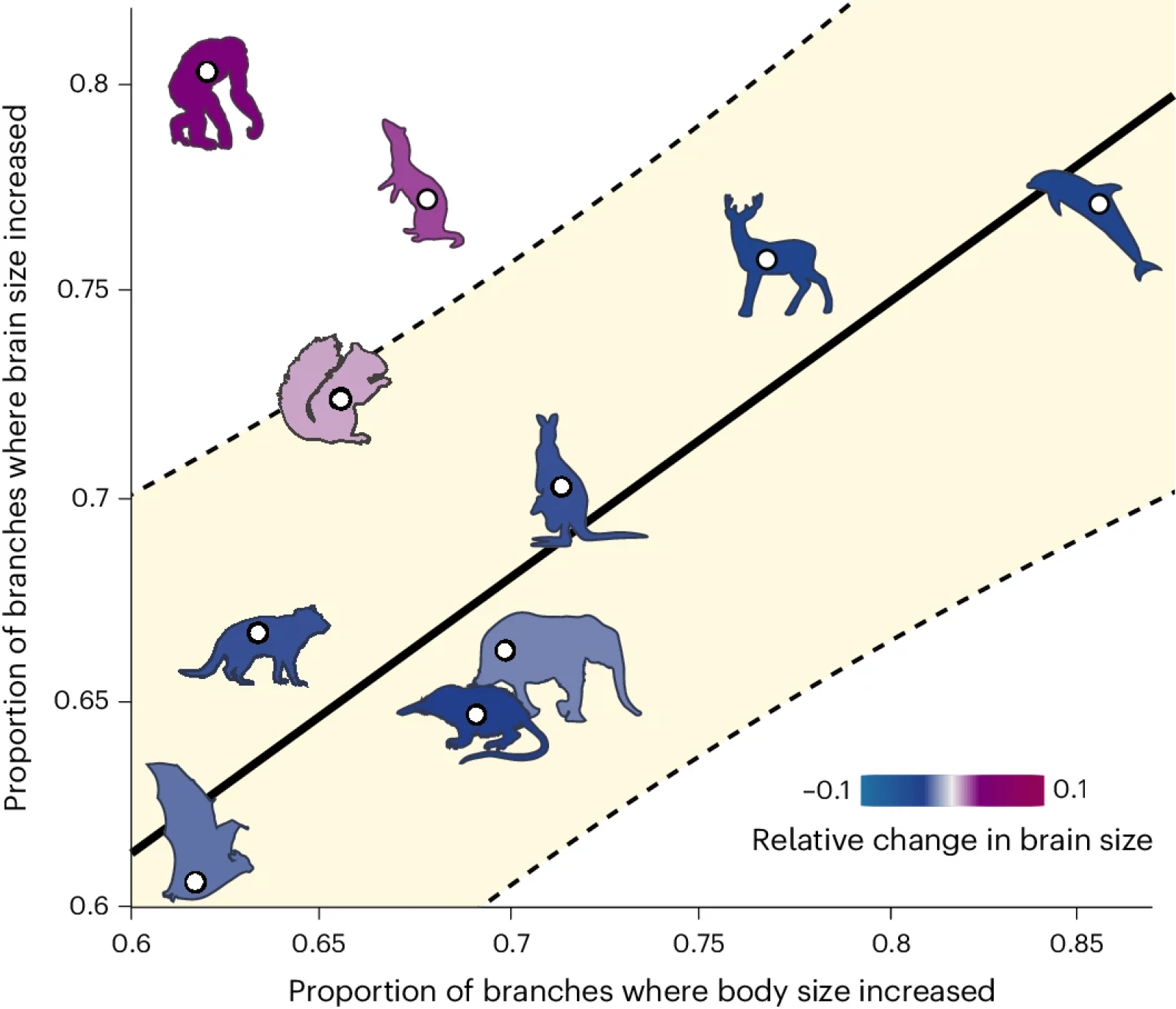The size of the human brain: a disturbing anomaly in animal evolution
Follow us on Google News (click on ☆)

Historically, scientists have long believed that brain size increased proportionally with body size. This linear assumption, accepted for over a century, is now being questioned by recent findings from researchers at the universities of Reading and Durham.
The researchers analyzed data from 1,500 animal species, utilizing advanced statistical methods to evaluate the relationship between brain size and body size. This rigorous approach has clarified centuries of controversy on brain evolution. Their results show that the relationship between brain and body size follows a curve, where larger animals have smaller brains than expected.
This discovery has significant implications for our understanding of animal intelligence and complex behaviors. The researchers suggest that the energetic constraints of large brains might explain why larger animals do not have proportionally larger brains.
The study's results also reveal intriguing exceptions. Humans, for instance, have evolved towards massive brains much more rapidly than any other mammal. Similarly, bats showed a rapid reduction in brain size at their emergence, followed by stabilization, likely related to the demands of flight.

The research shows notable differences between various groups of animals. Primates, rodents, and carnivores have all exhibited rapid changes in brain size. These trends, although not universal, indicate distinct evolutionary mechanisms and specific adaptations.
The prospects for future research are numerous. Scientists still wonder what prevents large animals from having bigger brains. New technologies and interdisciplinary approaches could provide answers. Studying the brain-body size relationship across different species, including birds, might reveal general trends applicable to many forms of life.